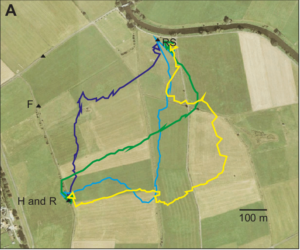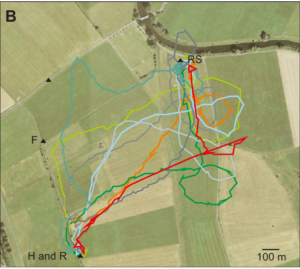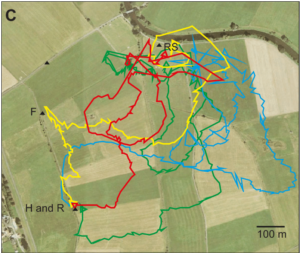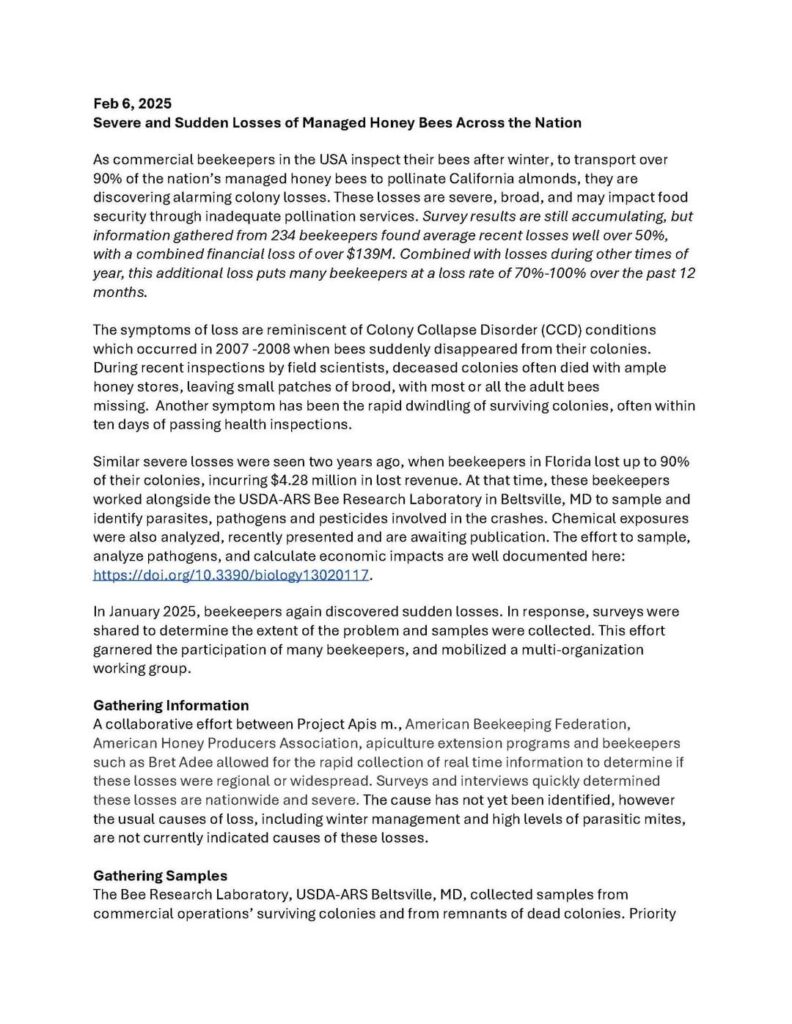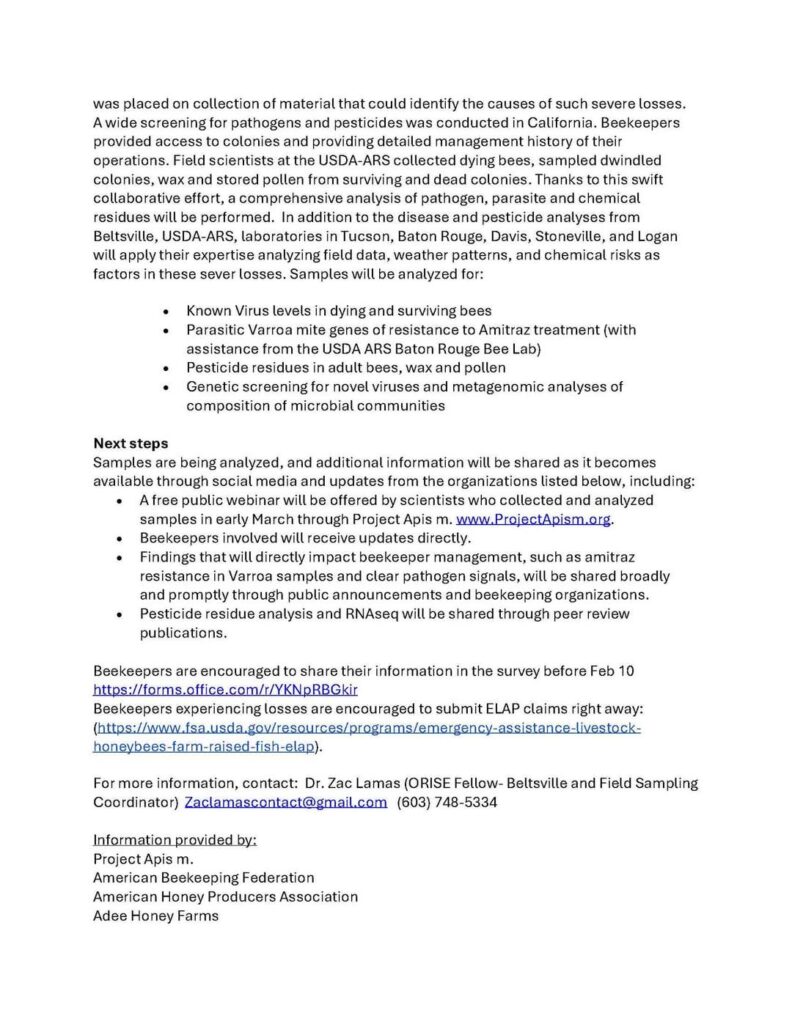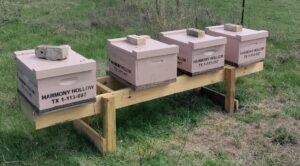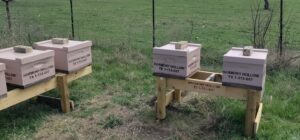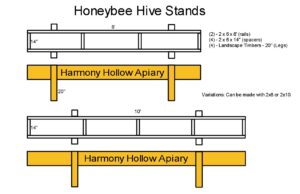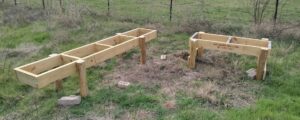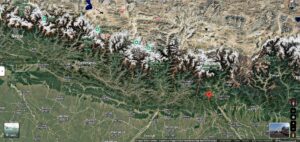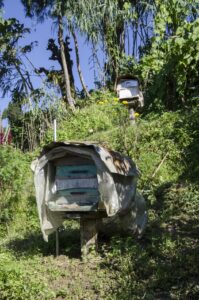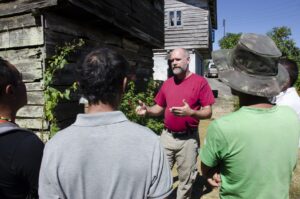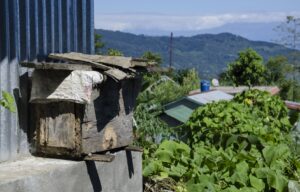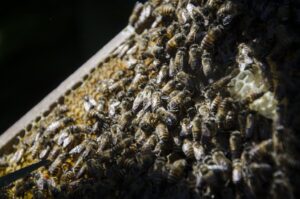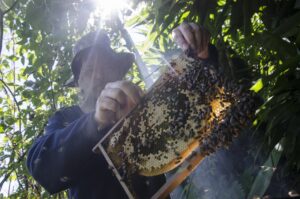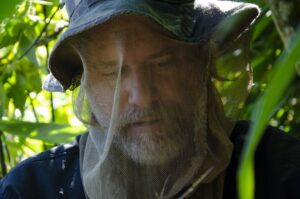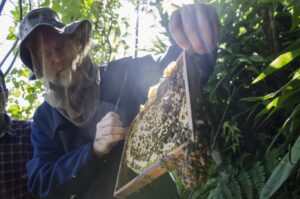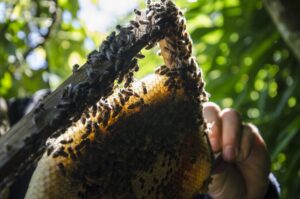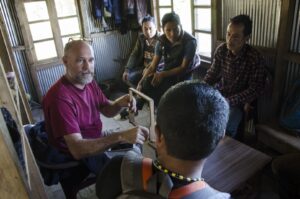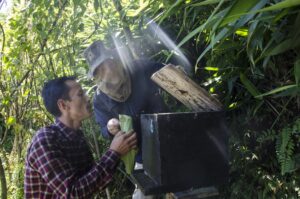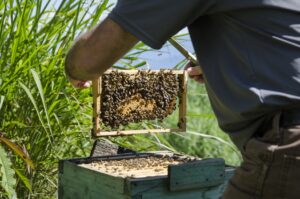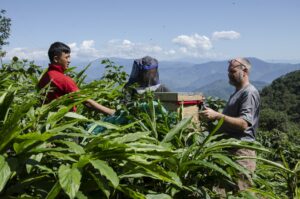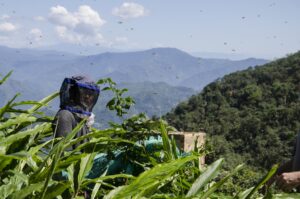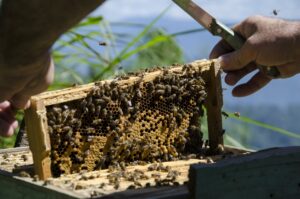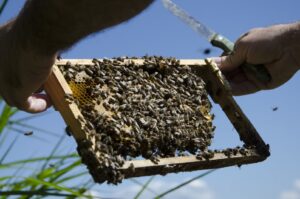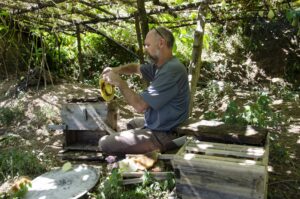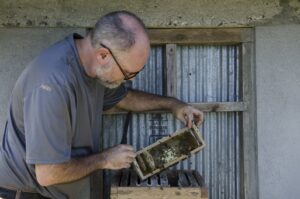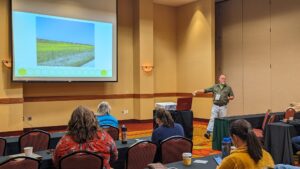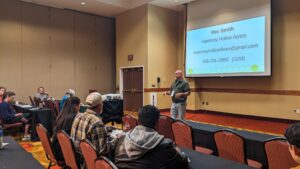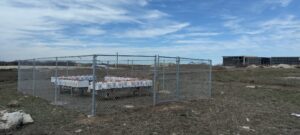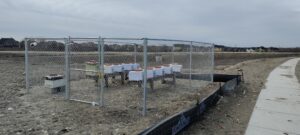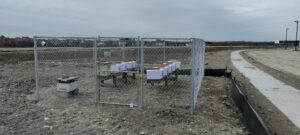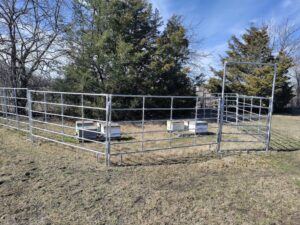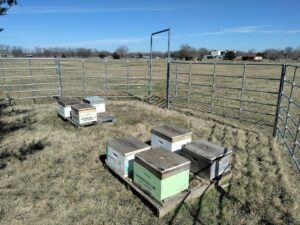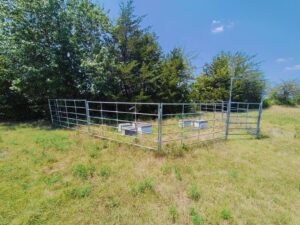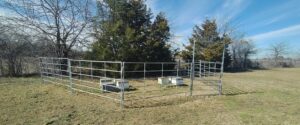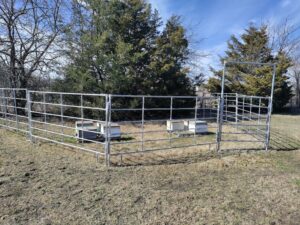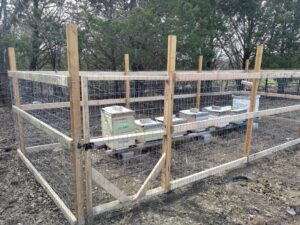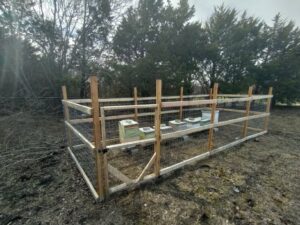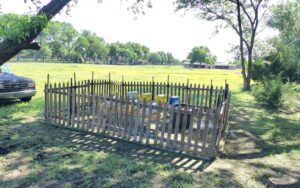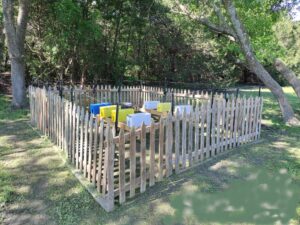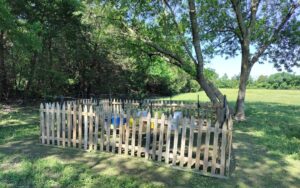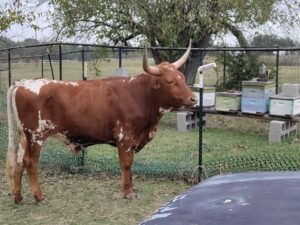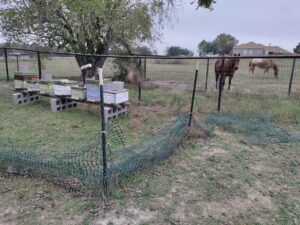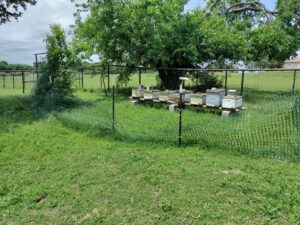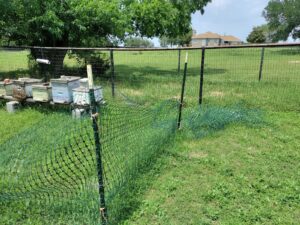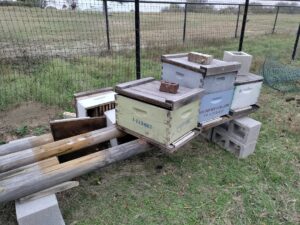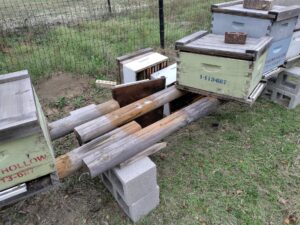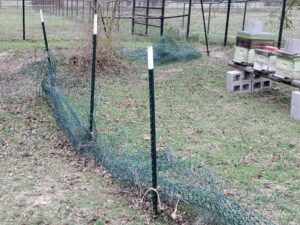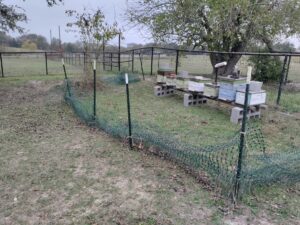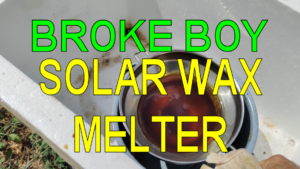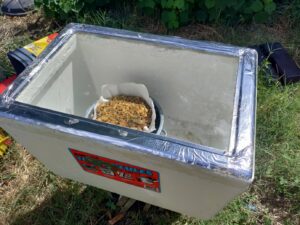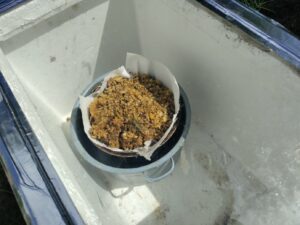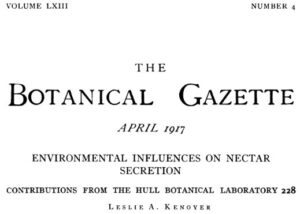Many property owners ask me about what to plant to help feed the bees. The short answer – is to plant for ALL the pollinators (butterflies, moths, wasps, bees (including native species as well as the honeybees used in agriculture for pollination services and honey production).
Though I separate this list to categories of trees vs bushes/wildflowers/Herbs/Vegetables/Fruits – know that they ALL benefit pollinator nutrition – and having a good variety of plants will ensure a variety of nutrition provided in the amino acids present in the pollen and nectar of the food offered to your pollinators.
I have a personal goal (or even mantra) – in the plants that suggest. They must accomplish at least 1 goal of feeding something.
- Feeding wildlife (deer, hog, rabbits, native & domestic pollinators) etc, etc
- Feeding Humans
- Feeding MY bees
If what is planted can fill at least ONE of those goals – then grow it! This list is by no means all-inclusive – and will be edited to add more as we are educated on more varieties that people enjoy in our area of North Texas. I *know* there are more beneficial plants that would help the bees (and pollinators) – however, I am going to try to limit this list to those that grow well in this area – knowing our temperatures, soil types, and drought (and rain) levels through the year.
Trees
I LOVE the fruits produced by many trees.
Fig Trees – Though these are pollinated by a wasp – they sure benefit my taste buds and belly!
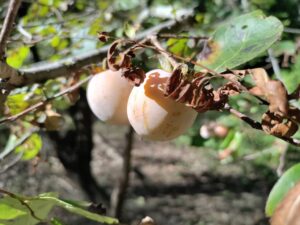 American Persimmon Tree (American Persimmon or Texas Persimmon) these make a fantastic sweet fruit – I often will eat them when foraging in a forest. The bees love them. They also feed the wildlife – and the seeds are spread through the wildlife scat. These are high in both sugars, and nutrition
American Persimmon Tree (American Persimmon or Texas Persimmon) these make a fantastic sweet fruit – I often will eat them when foraging in a forest. The bees love them. They also feed the wildlife – and the seeds are spread through the wildlife scat. These are high in both sugars, and nutrition
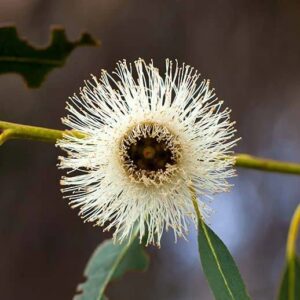
E Globulus Photo by Gaiaherbs.com
Eucalyptus (all it’s varieties – but I am growing the E. globulus (Blue Gum Eucalyptus) and E. camaldulensis (Red Gum Eucalyptus) – Eucalyptus trees are prolific nectar producers, and are tall trees. Native to Tasmania and Australia – these trees are some of the best nectar producers on that continent.
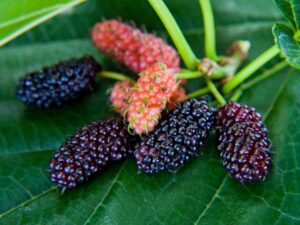 Mulberry Trees – These trees feed the bees, the birds (don’t you love the purple spots the birds leave on your car?), people, and more! They grow easily by grafting, or simply come up volunteer from bird droppings. A single tree can make 50 lbs of fruit! Just get them before the birds and squirrels do. Also good for feeding to your chickens or pigs.
Mulberry Trees – These trees feed the bees, the birds (don’t you love the purple spots the birds leave on your car?), people, and more! They grow easily by grafting, or simply come up volunteer from bird droppings. A single tree can make 50 lbs of fruit! Just get them before the birds and squirrels do. Also good for feeding to your chickens or pigs.
Pear Trees – Note that pear trees EASILY cross pollinate. So if you have a variety of “ornamental pear” tree – then it may negatively affect fruit-bearing pear trees and cause no fruits or deformed fruits to be set. Try to make sure you have edible fruit-bearing varieties that you plant.
PawPaw Tree – PawPaw Grow wild in forests in the Eastern US, these grow easily from seed
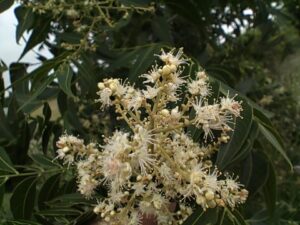 Western Soapberry Tree – This native was used by indigenous peoples to make early versions of soap. It’s blooms are fragrant across the countryside, and feed a WIDE variety of pollinators. In 2025 – these are in bloom in early June. See my own in-progress experiment with propagating these trees HERE.
Western Soapberry Tree – This native was used by indigenous peoples to make early versions of soap. It’s blooms are fragrant across the countryside, and feed a WIDE variety of pollinators. In 2025 – these are in bloom in early June. See my own in-progress experiment with propagating these trees HERE.
Locust Tree (i.e. Honey Locust, Black Locust). These trees – for the duration of their bloom – make a WONDERFUL honey for the bees and other pollinators. Keep the plants in check, though – because the thorns the tree produces can be huge!
Chinese Tallow – Another plant that is a wonderful nectar producer. Some folks want to eradicate this tree… However – did you know that the Tallow Tree is Texas’ largest commercial honey producer? A mature tree can produce a barrel (about 700 lbs) of honey in the duration of it’s nectar flow.
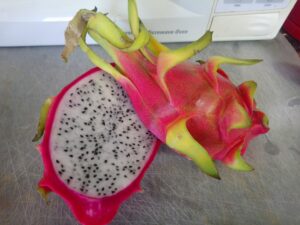 Dragon Fruit – another favorite for the bees, bats, moths, and more!
Dragon Fruit – another favorite for the bees, bats, moths, and more!
Quince – a drought-tolerant plant that has fruits that are great for jellies. It does like well drained soils, though – so some amending of our clay soil is in their best interest here in North Texas.
Mexican Plum – bees are the primary pollinators for these fruits. Great for pies, preserves, jams, and jellies.
Bushes / Vines
Ligustrum – This ornamental is a great producer of nectar for a short bloom period. It is VERY fragrant, and makes a great honey crop.
Gourds – Gourds really seem to be a great plant for all the pollinators – and produce a fun variety of fruit shapes that can be used for SO many projects.
Ground Cherries – These have a papery husk – much like a tomatillo, but are sweeter, and nutritious. Easily grow from seed, and the fruits keep for months.
Gooseberries – nutritious, and can be preserved without sugar. HAve natural pectin in their chemistry.
Currants – HIGH in vitamin C – up to 4x more than oranges. Make preserves, and more. A single bush can make 10 lbs of fruit. Grow well in cold regions.
Juneberries – vitamins, and fruit before strawberries.
Cornelian Cherries (Dogwood family) – a favorite in the Mediterranean
Huckleberries – high in antioxidents (higher than blueberries) – and have a LONG storage life.
Privet / Chinese Privet / Ligustrum – Again – a VERY fragrant nectar producer that makes a light-colored honey – and the air is just abuzz when they are in bloom. Don’t let some folks tell you they should be removed because they think they’re “Non Native” or “invasive”. That’s horse-hockey. They simply are a well-adapting beneficial plant. 😉
Almond Verbena / White Almond Bush / Tree Verbena ( Aloysia virgata ) (Info from my friend Esther Betschart) a shrubby, flowering plant native to Argentina and Brazil. It’s known for its strong, sweet vanilla-almond fragrance that attracts pollinators like butterflies, hummingbirds, and bees. Here’s a quick overview of the plant:
- Appearance: White flowers bloom throughout the summer on upright stems with dark green, sandpapery leaves.
- Growth: Can be grown as a small tree or large bush, and prefers well-drained, clay soil.
-
Sunlight: Needs full sun but can tolerate part sun/shade.
-
Water: Requires medium watering.
-
Hardiness: Susceptible to freezing weather, and is hardy to zone 8b.
-
Propagation: Can be propagated by cuttings in spring or early summer.
-
Other names: White Almond Bush, Tree Verbena.
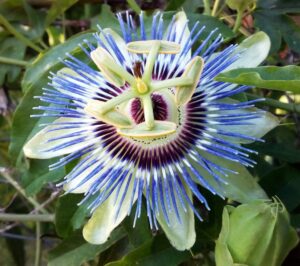 Passion Fruit – This vine has one of the most beautiful blooms I have ever seen. This one attracts all the pollinators, and it blooms throughout the spring and summer. The fruit when ripe is delicious! Definitely plant these seeds on your fence line!
Passion Fruit – This vine has one of the most beautiful blooms I have ever seen. This one attracts all the pollinators, and it blooms throughout the spring and summer. The fruit when ripe is delicious! Definitely plant these seeds on your fence line!
Elderberry – another favorite for bees, butterflies and more, this stalky tree/bush has a nice umbra of flowers and the berries are great for syrups, juices, and so much more. It’s also VERY nutritious – and have LONG been known to have medicinal properties. Good for making preserves, wine, syrups, and more.
Holly
Wildflowers / Ground Covers
Bee Balm / Horsemint / Monarda – These often come up volunteer in a field a year or so after being mowed or plowed. Bee balm is a bi0annual plant (only blooms every 2 years – or in it’s 2nd year of life) – so don’t be in a hurry to mow fields that have it! Bee Balm – as it’s name suggests – is a FANTASTIC producer of nectar for honey – as well as pollen for their protein source.
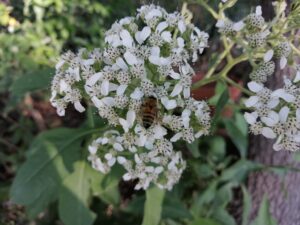 Green Antelopehorn Milkweed – This milkweed develops seed pods that resemble a green antelope horn – thus giving it it’s name. It feeds bees, monarch butterflies, swallowtail butterflies, and numerous beetles, moths, and other insects.
Green Antelopehorn Milkweed – This milkweed develops seed pods that resemble a green antelope horn – thus giving it it’s name. It feeds bees, monarch butterflies, swallowtail butterflies, and numerous beetles, moths, and other insects.
Clover ( White Clover, Crimson Clover ) – Note – Red Clover is DIFFERENT from crimson clover. Bees have a hard time reaching into red clover to get any nectar out. White and Crimson clovers, however, are fantastic nectar sources. I HIGHLY recommend these.
Garden Herbs
When left to go to bloom and seed – these garden herbs are ABSOLUTELY covered in pollinators when they are ready.
Dill
Fennell
Basil
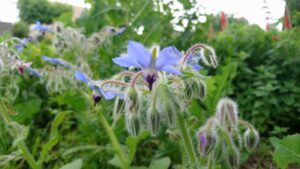 Borage
Borage
Mustard / Wild Mustard – there are SO many plants in the mustard ( brassica ) family. Broccoli, Cauliflower, actual Mustard plant, etc. These typically reseed prolifically, and benefit all the bugs!
Arugula
Radish

